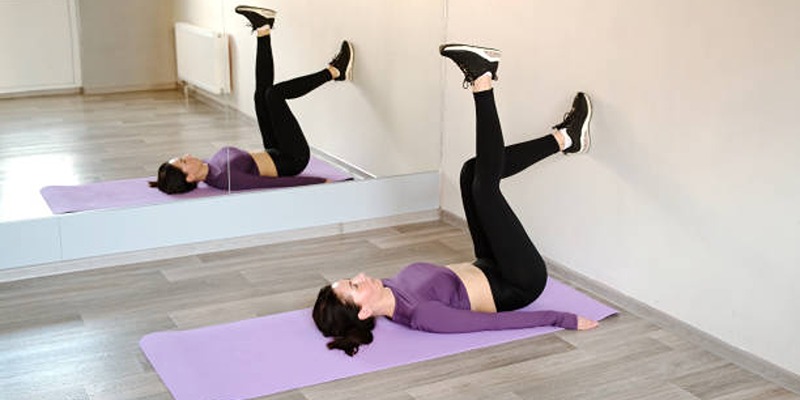Recovery from a separated shoulder involves the right treatment, time, and specific strategies. This is your step-by-step guide to help you achieve healthy healing, pain relief, and strength restoration. We'll tackle essential recovery methods, exercises, and recommendations to maintain safe and effective rehabilitation.
What is a Separated Shoulder?

A separated shoulder, or acromioclavicular (AC) joint separation, results when the ligaments that attach the collarbone (clavicle) to the shoulder blade (scapula) are stretched or ruptured. The injury occurs to the AC joint at the top of the shoulder and may vary in severity based on how bad the damage is.
Common Causes and Symptoms
A separated shoulder is most frequently a direct blow to the shoulder, as in a fall, contact sports, or auto accident. It may also happen from a funny fall onto an outstretched hand or elbow. Symptoms include:
- Pain and tenderness at the top of the shoulder.
- Swelling or bruising at the joint area.
- A bump at or near the shoulder joint from the collarbone's displacement.
- Pain and difficulty in raising the arm.
- Weakness on the affected shoulder.
Injury Severity Levels (Grades I-III)
Separated shoulder injuries are classified into three grades depending on the degree of ligament injury:
- Grade I (Mild): The AC ligament is strained but intact. There is minimal pain and swelling, and the joint is stable.
- Grade II (Moderate): The AC ligament is partially ruptured, and there is minor malalignment of the clavicle and scapula. Pain and swelling are increased.
- Grade III (Severe): Both the AC ligament and the coracoclavicular (CC) ligament are ruptured. The clavicle is grossly displaced, producing a deformity at the shoulder.
Initial Treatment
The R.I.C.E. approach is an often-recommended method of treating AC joint injuries right after they happen. It consists of the following:
- Rest: Avoid using the injured shoulder and keep it immobilized as much as possible. Use a sling if necessary to limit movement and prevent further strain.
- Ice: Apply an ice pack to the injury for 15-20 minutes every 2-3 hours during the first 48 hours. This helps reduce swelling and relieves pain.
- Compression: Use an elastic bandage or compression wrap to limit swelling. Ensure the wrap is snug but not so tight that it restricts blood flow.
- Elevation: Keep the injured shoulder elevated above heart level whenever possible to reduce swelling and improve circulation.
Managing Pain and Inflammation
Over-the-counter medicines like ibuprofen or acetaminophen can also alleviate pain and inflammation. Always stick to the prescribed doses and see a healthcare provider if more potent medicines are required. Regular icing of the area and wearing a sling can also ease pain. For intense pain, your physician may prescribe other treatments such as corticosteroid injections.
When to Seek Medical Attention
Seek medical attention immediately if you have any of the following symptoms:
- Severe pain that is not relieved by simple measures.
- Severe deformity or obvious misalignment of the shoulder.
- Swelling or bruising that persists and gets worse.
- Inability to move or strength in the offending arm.
Rehabilitation Process
The rehabilitation process for shoulder injuries may involve a combination of physical therapy, rest, and activity modification. Your doctor or physical therapist will create a customized treatment plan based on your specific injury and needs. Some common components of the rehabilitation process include:
Range-of-motion exercises
Range-of-motion exercises are designed to improve flexibility and help restore normal, pain-free movement in the affected joint. These exercises often include gentle stretches and controlled movements to gradually increase mobility without causing strain. In some cases, therapeutic devices like resistance bands or foam rollers may be used to enhance the effectiveness of these exercises and target specific areas.
Strengthening exercises
Strengthening exercises are aimed at rebuilding and maintaining muscle strength in and around the shoulder area. By focusing on targeted muscle groups, these exercises not only assist in recovering from current injuries but also help prevent future ones. They may involve weightlifting, resistance band workouts, or bodyweight exercises specifically designed to stabilize the shoulder joint.
Activity modification
Depending on the severity of your shoulder injury, your doctor may recommend modifying certain activities to avoid further strain or damage to the joint. This can include reducing the weight lifted or limiting overhead movements.
Pain management
To help alleviate pain and discomfort in the affected shoulder, your doctor may prescribe medication or suggest alternative treatments such as ice packs, heat therapy, or acupuncture.
Lifestyle Adjustments
Making lifestyle adjustments can significantly contribute to the healing process and help prevent future shoulder injuries. Incorporating healthy habits into your daily routine is essential for maintaining mobility and reducing strain on the shoulder. Here are some steps to consider:
- Maintain proper posture: Ensure you sit and stand with your shoulders aligned to avoid unnecessary strain.
- Avoid heavy lifting: Refrain from lifting or carrying objects that may aggravate your shoulder pain.
- Take breaks during repetitive activities: Rest regularly to prevent overuse of your shoulder muscles.
- Engage in gentle exercises: Low-impact activities can improve mobility without putting undue stress on the shoulder.
Preventing Future Injuries
Taking proactive steps to protect your shoulders can significantly reduce the risk of future injuries. Making small changes in your daily routine and incorporating healthy habits can make a big difference in maintaining shoulder health. Here are some tips to consider:
- Warm up before physical activities: Prepare your muscles and joints with light stretches or dynamic movements.
- Use proper technique: Ensure correct form when exercising or performing manual tasks to avoid unnecessary strain.
- Maintain strength and flexibility: Incorporate exercises that strengthen the shoulders and enhance mobility.
- Listen to your body: Stop activities that cause discomfort or pain and seek professional advice if needed.
When to Consider Surgery

Surgery may be an option when non-surgical approaches like physical therapy, medications, or lifestyle changes fail to offer adequate relief. Those dealing with ongoing pain, severe discomfort, or notable loss of shoulder function might find surgical intervention beneficial.
Common conditions that may require surgery include rotator cuff tears, shoulder impingement, or joint instability. Consulting with a healthcare professional can help determine the most appropriate course of action based on the severity of the condition and individual needs.
Conclusion
Recovering from a separated shoulder requires a thoughtful blend of rest, targeted exercises, and medical guidance. With proper treatment, most individuals regain full function and strength. Incorporating pain management, rehabilitation, and lifestyle changes supports long-term healing and reduces the risk of reinjury. Always consult a healthcare professional for a personalized plan and consider surgical options only when conservative treatments fall short.












